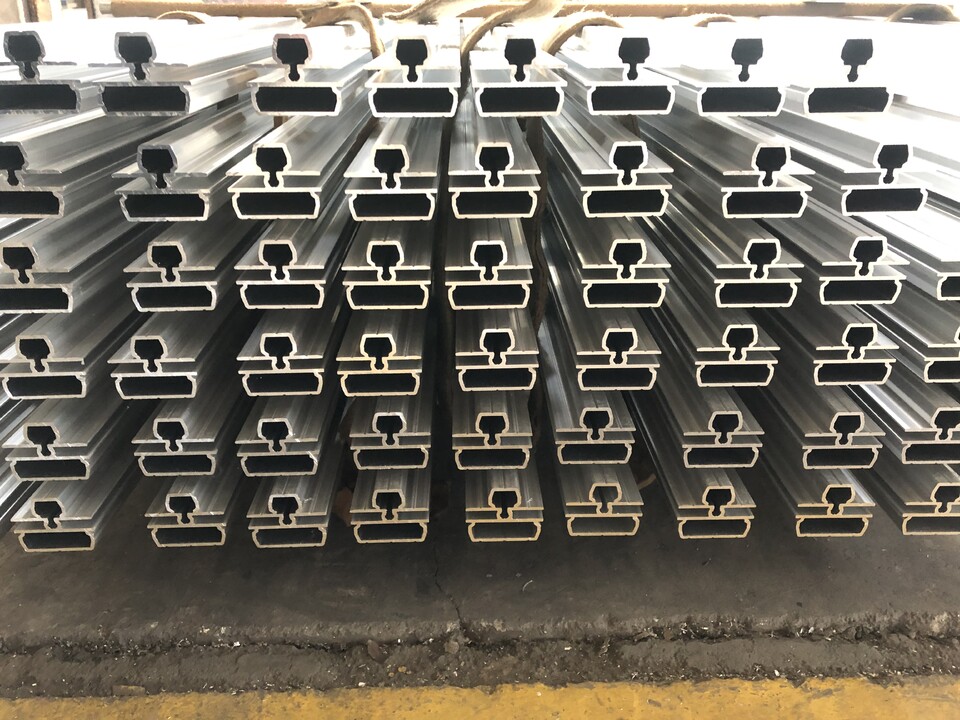Point 1: Introduction to common problems with shrinkage during the extrusion process of the extruder:
In the extrusion production of aluminum profiles, defects commonly known as shrinkage will appear in the semi-finished product after cutting the head and tail after alkali etching inspection. The mechanical properties of the aluminum profiles containing this structure do not meet the requirements, posing safety risks.
At the same time, when the produced aluminum alloy profiles are subjected to surface treatment or turning processing, the existence of this defect destroys the internal continuity of the material, which will affect the subsequent surface and finishing. In serious cases, it will cause hidden marks to be scrapped or damage to the turning tool and other hazards, this is a common problem in production. Here, this article briefly analyzes the reasons for the formation of aluminum profile shrinkage and the methods to eliminate it.
Point 2: The classification of shrinkage in extruded aluminum profiles by extruders: hollow shrinkage and annular shrinkage:
1) Hollow shrinkage: A hollow is formed in the center of the tail end of extruded profiles and bars. The cross section appears as a hole with rough edges or a hole with edges filled with other impurities. The longitudinal direction is a funnel-shaped cone, the tip of the funnel faces the direction of metal flow. It mainly occurs in single-hole plane die extrusion, especially at the tail of profiles extruded with small extrusion coefficients, large product diameters, thick walls, or oil-stained extrusion gaskets.
2) Annular shrinkage: The two ends of the extrusion shunt molded product, especially the head, are discontinuous rings or arcs, and the crescent shape is more obvious on both sides of the welding line. The annular shrinkage of each hole product is symmetrical.
The reason for the formation of shrinkage: The mechanical condition for the formation of shrinkage is that when the advection stage ends and the extrusion gasket gradually approaches the die, the extrusion increases and generates a pressure dN on the side surface of the extrusion barrel. This force together with the friction force dT cylinder, when the force balance condition dN cylinder ≥ dT pad is destroyed, the metal located around the extruded gasket area flows backward along the edge into the center of the blank, forming a shrinkage.
Point 3: What are the extrusion conditions that cause shrinkage in the extruder:
1. Extrusion residual material is left too short
2. The extrusion gasket is oily or dirty
3. The surface of the ingot or wool is not clean
4. The cut-off length of the product does not comply with regulations
5. The lining of the extrusion cylinder is out of tolerance
6. The extrusion speed suddenly increases.
Point 4: Methods to eliminate the shrinkage formed by aluminum extrusion machines and measures to reduce and prevent the formation of shrinkage:
1. Strictly follow the process regulations to cut and press the excess, saw the head and tail, keep the lining of the extrusion cylinder intact, prohibit oil extrusion gaskets, reduce the temperature of the aluminum rod before extrusion, and use special convex gaskets. Choose a reasonable length of residual material.
2. The surfaces of extrusion tools and aluminum rods should be clean
3. Frequently check the size of the extrusion cylinder and replace unqualified tools
4. Smooth extrusion, the extrusion speed should be slowed down in the later stage of extrusion, and the remaining thickness should be left appropriately, or the extrusion method of increasing the residual material should be used.
Point 5: In order to effectively eliminate the phenomenon of shrinkage during the production of aluminum profile extrusion machines, the excess thickness of the extruder also needs to be paid attention to. The following is the reference standard for the excess thickness:
Extruder tonnage (T) Extrusion thickness (mm)
800T ≥15mm 800-1000T ≥18mm
1200T ≥20mm 1600T ≥25mm
2500T ≥30mm 4000T ≥45mm
Edited by May Jiang from MAT Aluminum
Post time: Aug-14-2024


